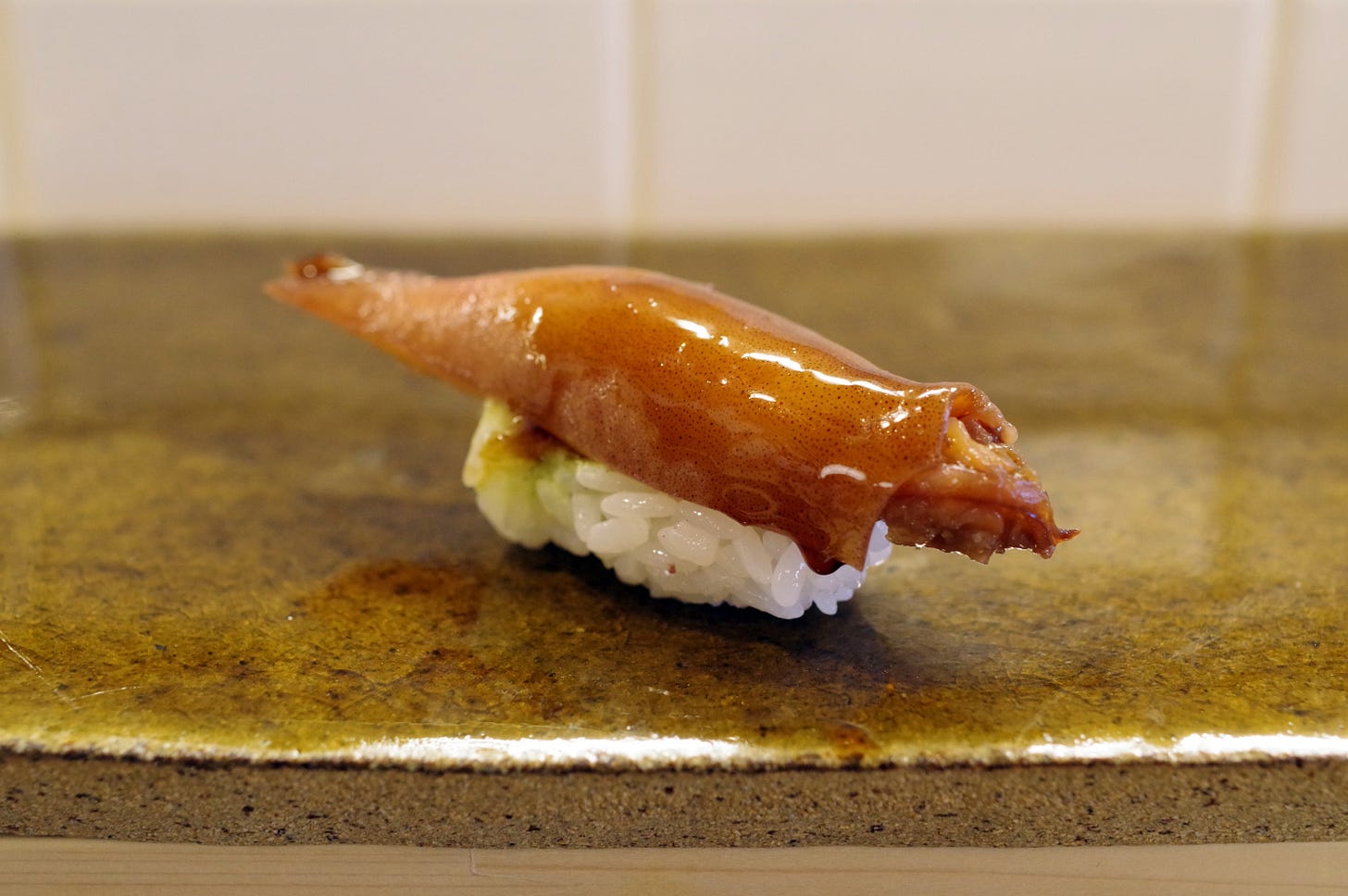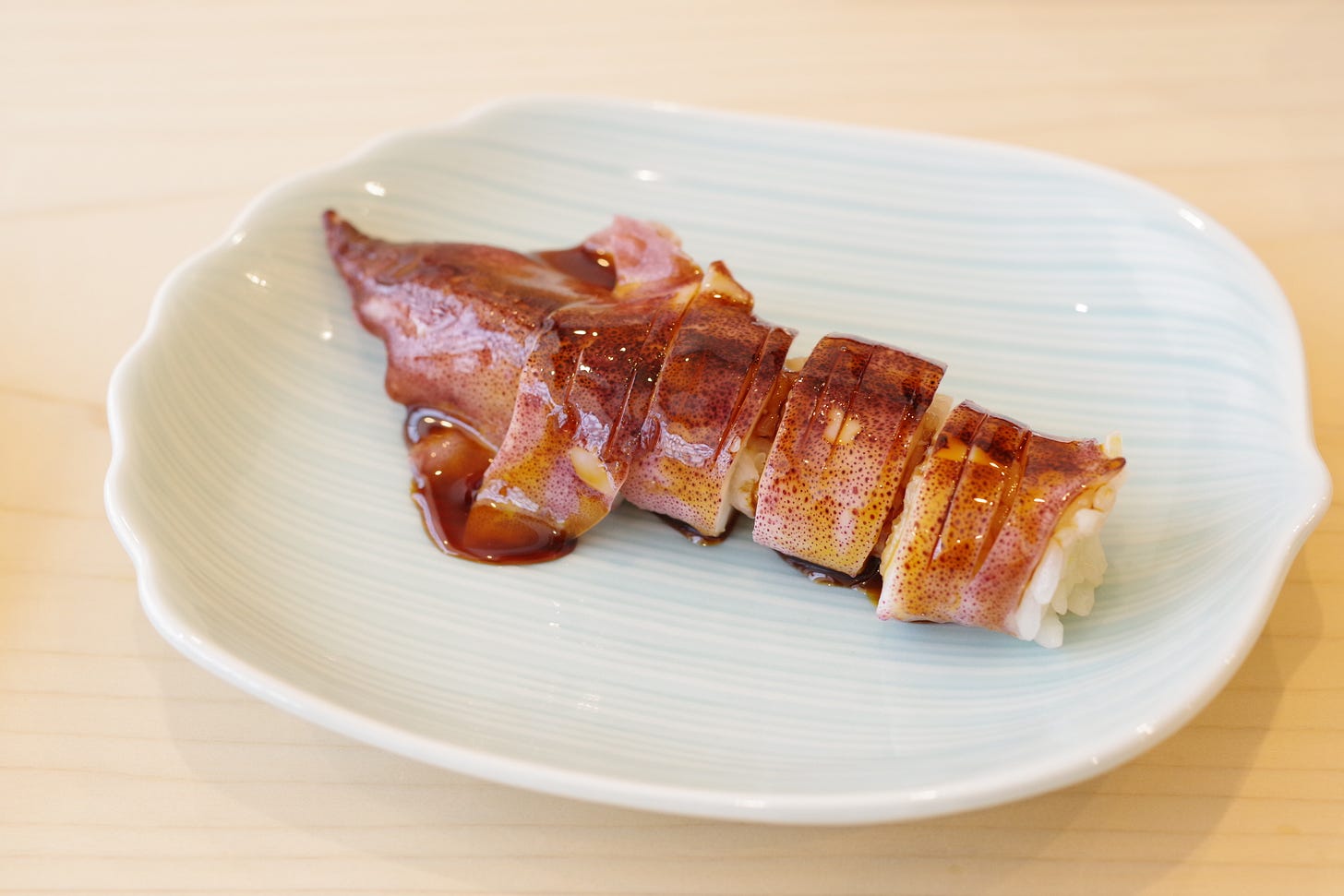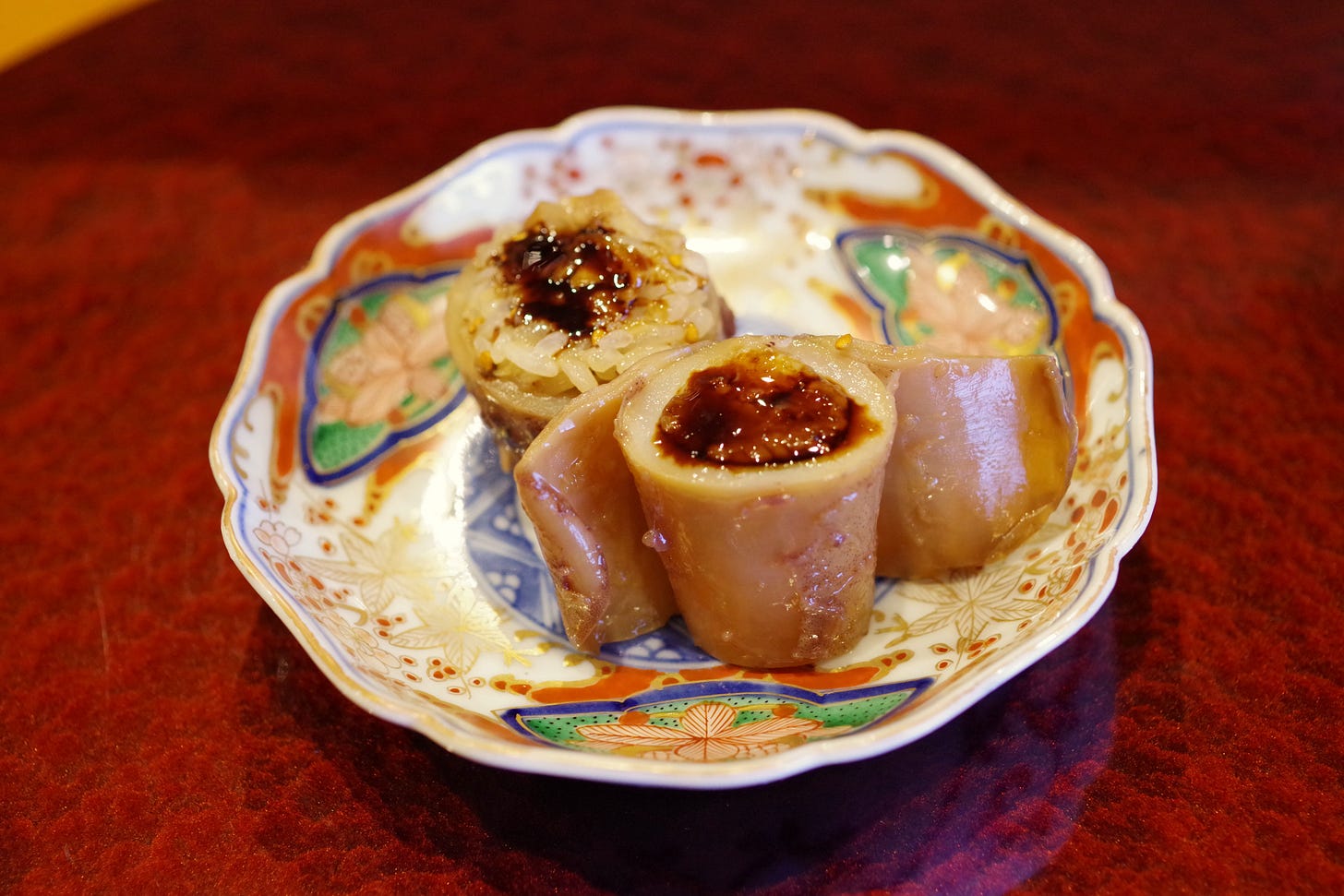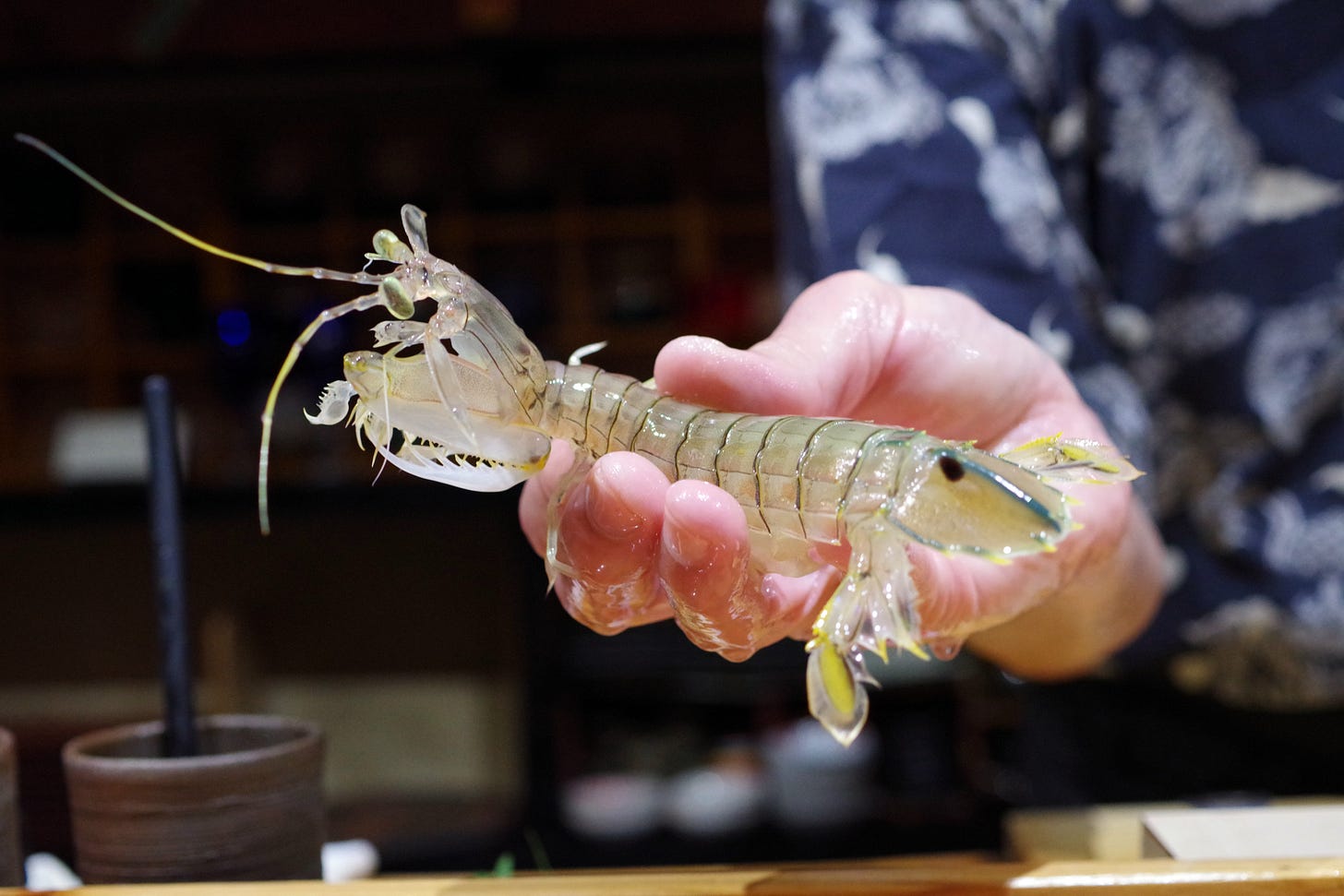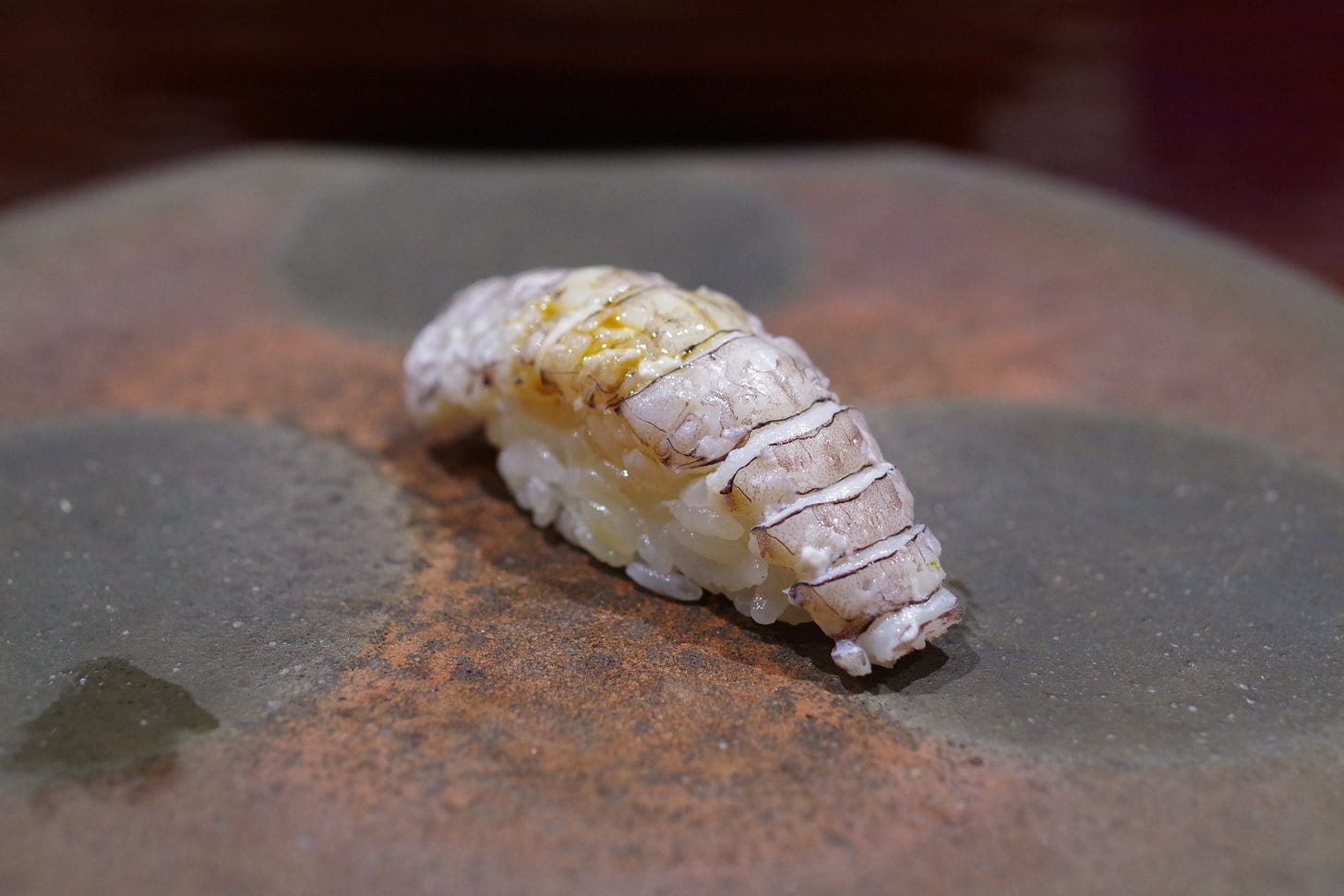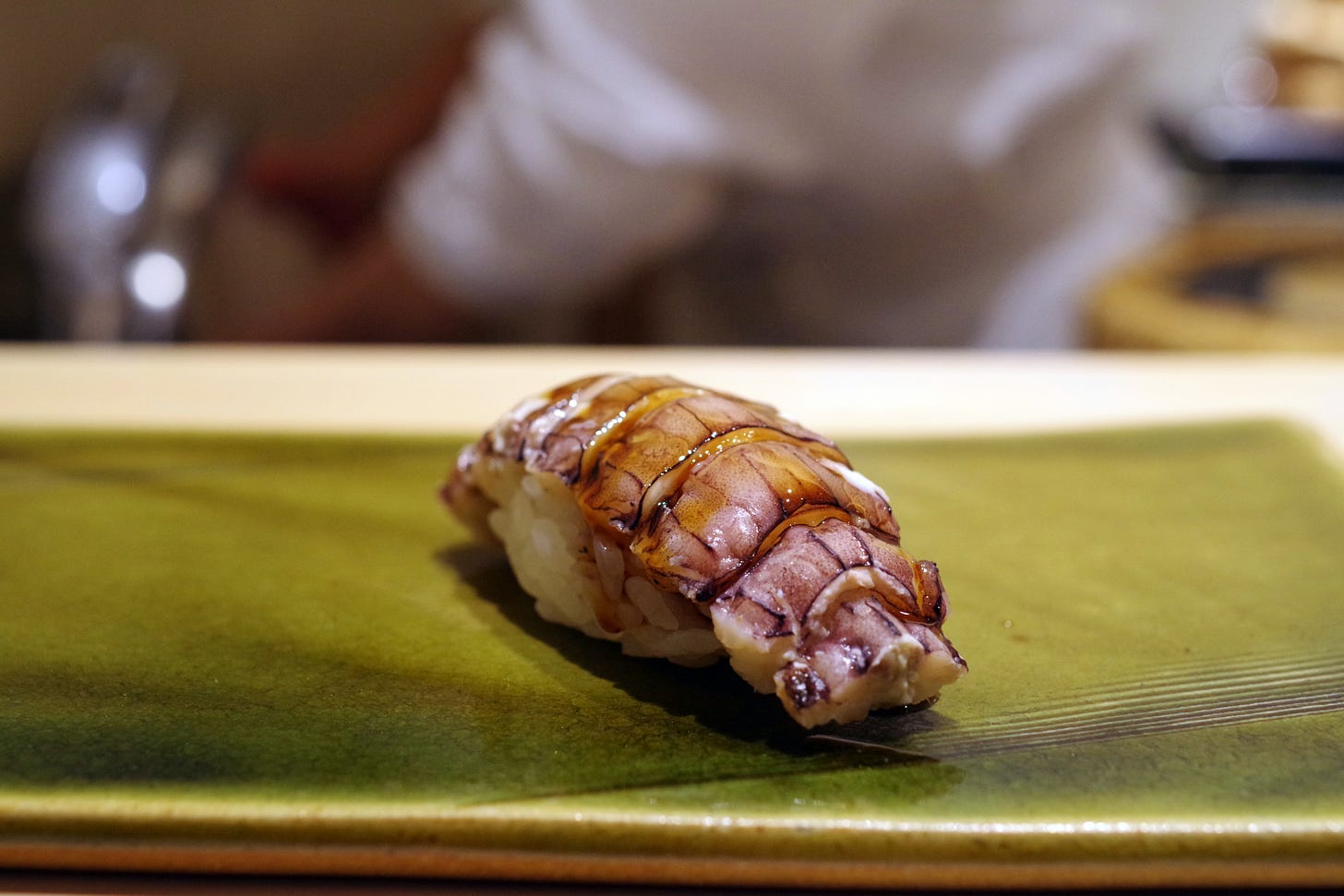In this 15th installment of "Traditional Sushi Types," I will discuss spear squid (Yari-ika) and mantis shrimp (Shako). Foreign visitors may not be familiar with these types of sushi at all, and even many Japanese people might not know them well. However, once you try them, you'll likely be hooked due to their unique flavors that can only be experienced with these specific types of sushi.
Spear Squid (Yari-ika)
Mantis Shrimp (Shako)
Spear Squid (Yari-ika)
Japanese name: Yari-ika
English name: Spear Squid
Season: Winter - Spring
As the name suggests, spear squid has a pointed end resembling a spearfish. Hakodate, Aomori, Ishinomaki, and Nagasaki are well-known for producing this squid. In winter, the squid's flavor and fat content become more pronounced, offering a dense sweetness. In early spring, "spear squid with roe" is very popular at Edomae sushi restaurants. The roe, when heated, has a unique and enjoyable texture.
"Inro-zume," made by stuffing slightly sweetened spear squid with vinegared rice, is a traditional Edomae-zushi dish that has attracted sushi connoisseurs for generations.
The best "sauce" to top it with, nimizume, is traditionally made by reducing squid broth. Most sushi restaurants use only simmered conger eel sauce, but its strong aroma can overpower the delicate flavor of spear squid. There's room for innovation by revisiting the classics, such as improving the simmering process.
Many sushi chefs are experimenting with controlling the cooking of spear squid roe to achieve their desired texture. Some serve it as nigiri rather than as a snack or "inro-zushi." It's interesting to note that because it's an old technique, it still has potential for development.
When savoring spear squid at a sushi restaurant, pay attention to these key aspects:
The meat: texture, aroma, and sweetness
The texture of the roe, which results from the cooking process
The balance between the squid meat and the roe
The harmony between the boiled roe and condiments
At sushi restaurants, spear squid is often served boiled rather than raw. Therefore, achieving the right texture is crucial. Sumi-ika (cuttlefish), which is a standard squid for Edomae sushi, is not used as boiled squid because it becomes tough when cooked. It's important for the spear squid to have a texture that complements the sushi rice. Regardless of the cooking method, it's also essential to taste whether the squid is cooked in a way that preserves its flavor and whether it's not overwhelmed by condiments.
Mantis Shrimp (Shako)
Japanese name: Shako
English name: Mantis Shrimp
Season: Late spring - early summer, late fall - early winter
Mantis shrimp is another traditional Edomae-zushi ingredient, a seafood with a different aroma and taste from regular shrimp, despite both being crustaceans. Outside of Japan, it's also a favorite in Hong Kong, where a popular dish called "Shoyanze Shrimp" (椒鹽瀨尿蝦) features much larger specimens than those used in Japan.
In Edomae-zushi, mantis shrimp is used in nigiri, so it doesn't need to be large. There are two peak seasons annually: from April to July, when egg-bearing females known as "katsubushi" are most popular, and from October to December, when the meat's flavor becomes richer. Each season offers its own unique charm, and sushi enthusiasts look forward to these times.
The vast majority of mantis shrimp are shipped after being "boiled on the beach" at the place of production because their flesh begins to deteriorate rapidly after death. Despite their alien appearance, they are very delicate crustaceans when uncooked. On rare occasions, sushi chefs buy live mantis shrimp and cook them just before serving. Such opportunities are rare, so it's best to savor them carefully.
Live mantis shrimp are extremely ferocious, with sharp, boxer-like claws. However, the meat inside these claws is very sweet and tasty. If you encounter a chef who offers you the claw meat from a live specimen, show your appreciation with a big smile. They'll value your recognition of their effort.
When savoring mantis shrimp at a sushi restaurant, pay attention to these key aspects:
Aroma
Sweetness
Texture
Seasoning
The points to consider are similar to those for tiger prawns. However, since mantis shrimp are often served boiled or salted rather than in a reduced soy sauce, seasoning is more crucial. The sweetness is more delicate than tiger prawns, so care should be taken to ensure that the saltiness or any added sweetness doesn't overpower the shrimp's natural flavor.
As mentioned earlier, mantis shrimp flesh is soft even when cooked. Excessive reheating when served can significantly reduce its appeal. Unlike the plump and moist texture of regular prawns, mantis shrimp should be moist, light, and juicy.
That's all for now. I look forward to seeing you again! If you want to remember sushi toppings and fish varieties discussed in this chapter, please refer to this linked article.
I hope you're looking forward to my next article!
If you enjoy this article, please share it on your social networks. Your support inspires me to keep writing!
The TOC of “Spirits of Sushi“
The History of Sushi
Exploring Sushi Varieties: Edomae-zushi (Nigiri-zushi), Kansai-zushi, and More
Essential Sushi Vocabulary: Key Terms for Navigating a Sushi Restaurant
The Heart of Sushi: A Guide to “Shari”, Sushi Rice
A Deep Dive into Sushi Fish and Accompaniments
The Art of the Sushi Master: Traditional Japanese Knives
Japan's Exquisite Fish Culture: From Tsukiji to Toyosu Market and Various Regions
Must-Visit Sushi Restaurants: From Tokyo to Sapporo, Fukuoka, and Other Regions
Regional Sushi Styles: Exploring Japan's Diverse Sushi Culture
Sushi and Sake Pairings: A Culinary Adventure
Sushi Etiquette and Table Manner: Dining like a Sophisticated Local
Shopping in Japan: Essentials for Crafting Delicious Sushi at Home
Sushi in Pop Culture: Manga and Movies
Sushi: A Lens on Health and Sustainability
Wrapping Up: The Future of Sushi





